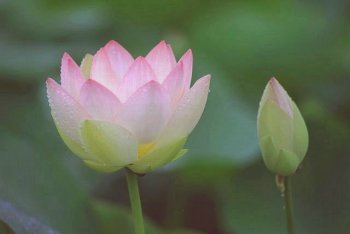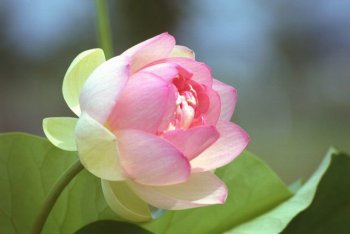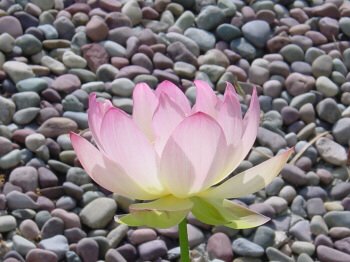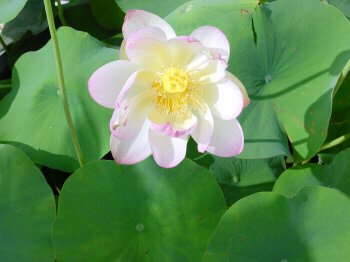Part 10 - Seven
Parables (IV)
7.7 Parable of the Medical Doctor
7.7.1 Original Text in the Sutra
7.7.2 Precis of the Parable
7.7.3 Analogies
7.7.4 Rareness of Buddha’s Dharma
7.7.5 The Dharma-ending Age
7.7.6 Conclusion
7.8 Remarks on the Seven Parables
7.8.1 Expediency and Falsehood
7.8.2 Predictions
7.7 PARABLE OF THE MEDICAL DOCTOR
The parable is spoken for those who are not aware of the urgency to cultivate virtues and merits, to study and practice Buddha’s teachings so as to
liberate themselves from suffering.
7.7.1 Original Text in the Sutra
Please click to read
the extract in Chapter 16.
7.7.2 Precis of the Parable
 A
medical doctor returned home from his business trip. He found that
his sons suffered from the effects of poisoning. Happy to see their
father again, they asked him to cure them. Their father then prescribed
the medicines for them. Some of them took it and recovered soon. However,
some refused to do so as they did not care. One day, the father left
home and told his sons of the retirement in a distant country. The
sons were shocked. Realizing they would become orphans without any
help from parents, they took the medicines that their father left
behind, and finally were cured. Hearing of their recovery, their father
came back home. They lived together happily. A
medical doctor returned home from his business trip. He found that
his sons suffered from the effects of poisoning. Happy to see their
father again, they asked him to cure them. Their father then prescribed
the medicines for them. Some of them took it and recovered soon. However,
some refused to do so as they did not care. One day, the father left
home and told his sons of the retirement in a distant country. The
sons were shocked. Realizing they would become orphans without any
help from parents, they took the medicines that their father left
behind, and finally were cured. Hearing of their recovery, their father
came back home. They lived together happily.
7.7.3 Analogies
- The father and sons – Buddha loves the sentient beings as his sons.
- Sons suffered from poisoning – We sentient beings suffered from the Three Poison in this world, i.e. greed, anger and hatred.
- The medicine prescribed by the father – Buddha is the king of medicine, whose teachings are the best medicine to cure sentient beings from suffering.
- The father retired in a distant country – The Buddha was going to enter Nirvana.
7.7.4 Rareness of Buddha’s Dharma
Buddha is compassionate to all sentient beings, wishing them to cross over the sea of suffering. Though the Buddhist door is widely open,
it cannot push people in if they are not aware of it, or if they are not willing to enter. In the beginning of Lotus Sutra, five thousand Bhisuki withdrew
from the assembly. Though Shakyamuni Buddha is the foremost in speaking Dharma, he could not convince his followers to accept and agree
what he said in the assembly. However, those who have opportunities to hear Dharma and learn Buddhism must have good roots cultivated in
their past lives.
For the rareness of Buddha’s Dharma, the Buddha drew an analogy to a blind turtle, whose head hit the hole of a small piece of wood floating
in a vast sea. Unfortunately, some people are not aware of this rare chance to liberate themselves from suffering., despite of the great Buddhist
teachings in front of them. They continue to indulge in the sensual pleasures. Some of them may be satisfied in practicing Small Vehicles. Some of
them may think that they can study Buddhism and practice later. Thus, the Buddha left this world physically, so that his followers have nothing to rely
one, and liberate themselves right the way by studying and practicing Buddhism.
7.7.5 The Dharma-ending
Age
 The
extant Buddhist teachings are generally divided into 3 stages, which
represent the establishment, splitting and decline of the teachings.
It is counted in years after the passing of Shakyamuni Buddha. The
extant Buddhist teachings are generally divided into 3 stages, which
represent the establishment, splitting and decline of the teachings.
It is counted in years after the passing of Shakyamuni Buddha.
- The Perfect Age – lasting about 500 years, during which the Buddha’s teaching was correctly practiced, and Enlightenment was often attained
by the practitioners.
- The Semblance Age – lasting about 1000 years, during which a form of the teaching was practiced, and Enlightenment was seldom attained.
- The Dharma-ending Age – lasting some 10,000 years, during which a diluted form of the teaching exists, and Enlightenment is rarely attained.
At present, it is the 26th century after the passing of Shakyamuni Buddha, which means we are experiencing the decline, dissension
and schism of the Buddha’s teaching in the Dharma-ending Age. After this degeneration age, there will have no Buddha’s teaching for a very, very long
time until the next Buddha Maitreya arrives at this world.
7.7.6. Conclusion
We have to urge ourselves to take the chance of this life to study Buddhism. We should not wait to take the ‘medicine’, i.e. the teachings left by
Shakyamuni Buddha, otherwise we will not know when we are ‘cured’, i.e. salvaged from suffering. It is of utmost urgency to make use of physical body
to cross over the sea of suffering in this life. Do not wait for the next life, as there has no guarantee at all to be reborn with the physical body in the age of
extant teaching of Buddhism.
7.8 REMARKS OF THE SEVEN PARABLES
7.8.1 Expediency and Falsehood
When the Buddha revealed to his disciples the highest truth in the assembly, he explained that his previous teachings were just expedient means
leading to the ultimate one. Had he all in the beginning told them the ultimate truth, his disciples would never have believed him, or refused to accept it.
 The
Buddha, who promised one thing and gave another as illustrated in
the parable of The House on Fire, was not guilty of falsehood, for
he had determined to save his children by means of an expedient. Thus,
the first preaching of the Three Vehicles to attract all sentient
beings and afterwards saving them by means of One Vehicle only. The
Buddha, who promised one thing and gave another as illustrated in
the parable of The House on Fire, was not guilty of falsehood, for
he had determined to save his children by means of an expedient. Thus,
the first preaching of the Three Vehicles to attract all sentient
beings and afterwards saving them by means of One Vehicle only.
However, some disciples might not appreciate this arrangement, as they thought they had not learnt the correct truth at all by following the Buddha
so devotedly for many years. They withdrew from the assembly with the doubt that the previous Buddha’s teaching was actually false.
Just as illustrated by the other parable of Transformed City, the three different vehicles (i.e. the Arhat, the Pratyeka-Buddha and the Bodhisattva )
are only temporary expedients made necessity by the diversity of temperament among the disciples, as well as by their varying degrees of spiritual
development. Strictly speaking, Shakyamuni Buddha was a great teacher.
When the conditions were ripened, the Buddha pointed out that there was one and only one Buddha Vehicle, not any other vehicles he delivered
in the past. However, his previous teachings would lead the sentient beings from the provisional to the ultimate truth, from partial to complete enlightenment.
Should the students accuse the great teacher of falsehood, when the teacher makes use of expedient means or analogies to help the students to understand
a concept.
7.8.2 Predictions
Similarly, if the Buddha told his disciples in the beginning that they could attain Supreme Enlightenment as what he attained, his disciples would
never accept it as they could not visualize what it was, and they would never believe him. Buddhahood is the highest state that the sentient beings can
achieve. Skayamuni Buddha never claimed himself to be God nor the son of God, that no one could surpass him. He told all sentient beings that they
had the same Buddha’s nature, thus they could attain the same Buddhahood as what he attained.
In order to build up the faith and confidence of his disciples, the
Buddha made several predictions in the assembly. Upon addressing Sariputra
in the beginning, he converted the eldest and the most respectful
disciple first. When Sariputra regretted to devote himself to the
realization of an inferior idea, i.e. Arhatship, and made vow to achieve
the Supreme Enlightenment in Buddhahood, the Buddha then predicted
Sariputra would became a Tathagata called Padmaprabhasa or ‘Lotus
Radiance’. The prediction was significant as it would remove the doubts
of other disciples, who thought they learnt wrongly in the past, and
would never achieve the Supreme Enlightenment.
 Further
on, the Buddha gave prediction to another four leading elders, Subhuti,
Mahakatyatana, Mahakasyapa and Mahamaudgalyayana, after he expounded
the Parable of the House on Fire. It was never not too late to transfer
from inferior Arhat ideal to the superior Bodhisattva ideal, and to
aspire after Buddhahood. Further
on, the Buddha gave prediction to another four leading elders, Subhuti,
Mahakatyatana, Mahakasyapa and Mahamaudgalyayana, after he expounded
the Parable of the House on Fire. It was never not too late to transfer
from inferior Arhat ideal to the superior Bodhisattva ideal, and to
aspire after Buddhahood.
When more and more disciples came to confess their shortcomings and declared their acceptance of the new teachings, Pruna Matrayaniputra,
the foremost in preaching, and the five hundred other distinguished Arhats were predicted to attain Buddhahood.
Further predictions followed, including Ananda, Rahula and two thousand other disciples, as more Hinayana disciples resolved to accept the higher
spiritual ideal.
Lastly, addressing to Bodhisattva Bhaisajyaraja, or ‘King of Healing’, the Buddha declared that all those sentient beings represented in the assembly,
who heard just a single verse or word of the Lotus Sutra with a single thought of delight in it, were all assured of Supreme Enlightenment. That is why Lotus
Sutra is so important, and said to be ‘the King of the Sutra’.
|



 A
medical doctor returned home from his business trip. He found that
his sons suffered from the effects of poisoning. Happy to see their
father again, they asked him to cure them. Their father then prescribed
the medicines for them. Some of them took it and recovered soon. However,
some refused to do so as they did not care. One day, the father left
home and told his sons of the retirement in a distant country. The
sons were shocked. Realizing they would become orphans without any
help from parents, they took the medicines that their father left
behind, and finally were cured. Hearing of their recovery, their father
came back home. They lived together happily.
A
medical doctor returned home from his business trip. He found that
his sons suffered from the effects of poisoning. Happy to see their
father again, they asked him to cure them. Their father then prescribed
the medicines for them. Some of them took it and recovered soon. However,
some refused to do so as they did not care. One day, the father left
home and told his sons of the retirement in a distant country. The
sons were shocked. Realizing they would become orphans without any
help from parents, they took the medicines that their father left
behind, and finally were cured. Hearing of their recovery, their father
came back home. They lived together happily. The
extant Buddhist teachings are generally divided into 3 stages, which
represent the establishment, splitting and decline of the teachings.
It is counted in years after the passing of Shakyamuni Buddha.
The
extant Buddhist teachings are generally divided into 3 stages, which
represent the establishment, splitting and decline of the teachings.
It is counted in years after the passing of Shakyamuni Buddha. The
Buddha, who promised one thing and gave another as illustrated in
the parable of The House on Fire, was not guilty of falsehood, for
he had determined to save his children by means of an expedient. Thus,
the first preaching of the Three Vehicles to attract all sentient
beings and afterwards saving them by means of One Vehicle only.
The
Buddha, who promised one thing and gave another as illustrated in
the parable of The House on Fire, was not guilty of falsehood, for
he had determined to save his children by means of an expedient. Thus,
the first preaching of the Three Vehicles to attract all sentient
beings and afterwards saving them by means of One Vehicle only.  Further
on, the Buddha gave prediction to another four leading elders, Subhuti,
Mahakatyatana, Mahakasyapa and Mahamaudgalyayana, after he expounded
the Parable of the House on Fire. It was never not too late to transfer
from inferior Arhat ideal to the superior Bodhisattva ideal, and to
aspire after Buddhahood.
Further
on, the Buddha gave prediction to another four leading elders, Subhuti,
Mahakatyatana, Mahakasyapa and Mahamaudgalyayana, after he expounded
the Parable of the House on Fire. It was never not too late to transfer
from inferior Arhat ideal to the superior Bodhisattva ideal, and to
aspire after Buddhahood.





